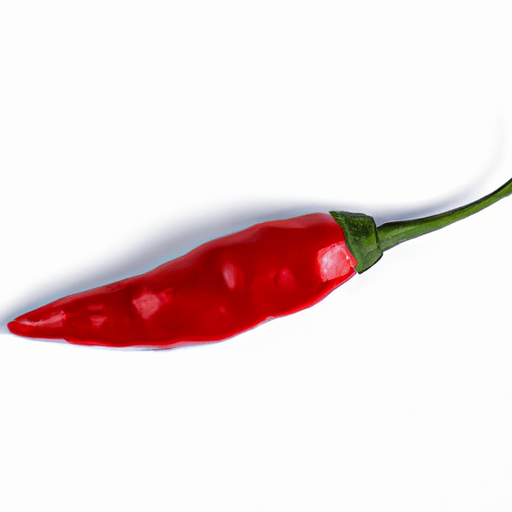The Fiery Delight: Chilli without Beans
If you think chili must always have beans, it’s time to challenge that notion. While beans certainly play a traditional role in chili, there’s a whole world of flavors to explore when you take them out of the equation. In this blog post, we’ll delve into the tantalizing world of chili without beans. Brace yourself for a taste sensation that will leave you craving more!
A Sensational Flavor Explosion
Chili without beans embraces a bolder flavor profile that sets it apart from its bean-filled counterpart. The absence of beans allows the other ingredients to shine, creating a symphony of flavors. The star of the show is the chili pepper itself, delivering a fiery kick that ignites your taste buds. The smoky undertones of cumin and paprika add depth, while garlic and onions contribute their unmistakable savory notes. The combination of spices and aromatics creates a captivating flavor symphony you won’t soon forget.
Versatile Culinary Applications
Chilli without beans provides endless culinary possibilities. It can serve as a tasty topping for hot dogs, burgers, or nachos, adding a zesty punch to your favorite dishes. You can also incorporate it into Tex-Mex classics like enchiladas, quesadillas, or tacos, turning ordinary meals into extraordinary culinary experiences. Furthermore, chili without beans makes for an excellent filling for stuffed bell peppers or a flavorful base for chili mac and cheese. With this versatile dish, your creativity knows no bounds.
Nutritional Benefits
Apart from its remarkable taste, chili without beans offers several nutritional benefits. It’s a low-calorie option that provides ample amounts of essential vitamins and minerals. The chili peppers themselves are an exceptional source of vitamin C and a compound called capsaicin, known for its metabolism-boosting properties. The absence of beans reduces the carbohydrate content while keeping the protein content intact, making it a great option for those watching their carb intake. So, indulge guilt-free in this delectable dish, knowing that it’s nourishing your body.
A Historical Perspective
The roots of chili date back to the indigenous peoples of the Americas, who cultivated chili peppers thousands of years ago. While beans were introduced to chili by European settlers, the original chili recipes relied solely on the bold flavors of the peppers themselves. Today, chili without beans allows us to reconnect with the traditional flavors of this ancient dish. It’s a celebration of chili in its purest form, paying homage to its rich history.
Fun Facts about Chili without Beans
- In some regions of Texas, “chili con carne” specifically refers to chili without beans.
- The legendary chef, Julia Child, once remarked that “a hot dog without chili is a lost opportunity.”
- The first recorded chili recipe in the United States, called “San Antonio Red Chili,” contained only beef, spices, and dried chili peppers.
Dive into the world of chili without beans and experience a culinary adventure that’s as exciting as it is delicious. Explore its bold flavors, savor its versatility, and relish its nutritional benefits. Remember, sometimes breaking tradition leads to the most extraordinary creations. So, grab your apron, gather your ingredients, and let chili without beans ignite your passion for bold and vibrant cuisine!
Chilli without Beans:
Origin
- Chilli peppers, also known as chili or chili peppers, are the fruit of plants from the genus Capsicum.
- The origin of chilli peppers is thought to be in the Americas, specifically in Central and South America.
- Archaeological evidence suggests that chilli peppers were cultivated as early as 5000 BCE in present-day Mexico.
Common Uses
- Chilli peppers are widely used in cooking to add heat and flavor to various dishes.
- They are used in cuisines from around the world, including Mexican, Indian, Thai, and Chinese cuisines.
- Chilli peppers are used in various forms, such as fresh, dried, powdered, or as a paste or sauce.
Nutritional Benefits
- Chilli peppers are low in calories and are a good source of vitamins A, C, and E.
- They also contain minerals such as potassium and magnesium.
- Chilli peppers are rich in a compound called capsaicin, which gives them their characteristic spiciness and has been studied for its potential health benefits.
Unique Properties and Historical Significance
- The heat of chilli peppers is measured using the Scoville scale. The scale measures the concentration of capsaicinoid compounds in the peppers.
- Chilli peppers can vary greatly in their level of spiciness, ranging from mild to extremely hot.
- Capsaicin is known to have pain-relieving properties, which is why it is used in some topical creams for muscle pain relief.
- Chilli peppers have played a significant role in various cultures throughout history. They were highly valued and even used as a form of currency in some societies. They also played a part in the spice trade routes that shaped world history.




Use the share button below if you liked it.
It makes me smile, when I see it.